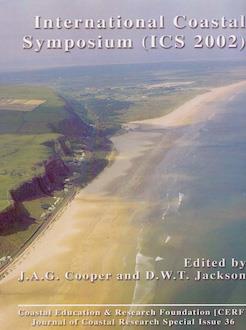Despite decades of rigorous investigation reliable prediction of aeolian sediment transport rates continues to prove impossible. Transport rate formulae are based on the governing principal of steady state equilibrium, such that wind velocity produces a linear response in sediment flux. Field experiments however demonstrate a highly non-linear response and considerable deviation between observed and predicted transport rates. The limited predictive ability of the transport rate equations is largely attributed to crude measurement techniques that characterise wind velocity and sediment flux using time averaged values on the order of minutes effectively concealing a time scale on the order of seconds on which the equilibrium condition is established. Attempts however to resolve a characteristic time scale, continue to reveal only inextricable complexity. It is becoming clear from the study of multi-component systems that such non-linearity is a pervasive attribute of system dynamics.
Wind tunnel experiments were conducted to examine the nature of steady state sand transport under uniform forcing. Grains traversing a collimated region, illuminated by 500w halogen lighting, were acquired by video camera and transferred to computer at a rate of 10 frames per second. A suite of image analysis techniques was developed to quantify the volume of sand recorded in a sequence containing on the order of 104 images and a transport time series generated. Wind velocity measurements acquired using a Pitot tube / manometer combination and simultaneous with transport measurement, are recorded using a second video camera positioned normal to the manometer.
In contradiction to the steady state hypothesis, sand transport was observed to flux sporadically suggesting that the dynamics of aeolian transport are similar to avalanches observed in a sand pile. The number size distribution for transport events shows clear power-law scaling over about 2.5 orders of magnitude which is consistent with the dynamics of self-organised critical systems. Such systems are inherently unpredictable, a fact which may contribute to our understanding of the intractability of the aeolian transport problem.





